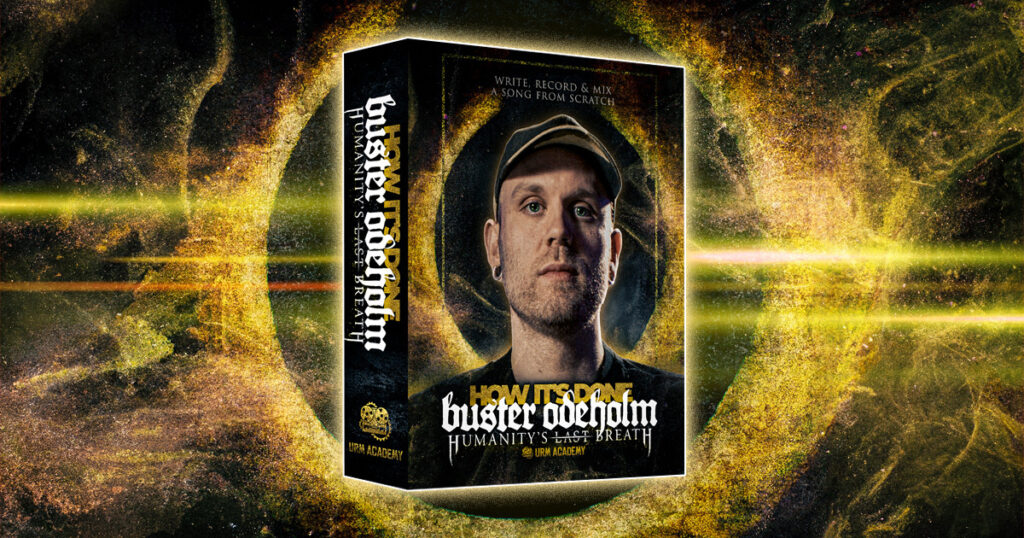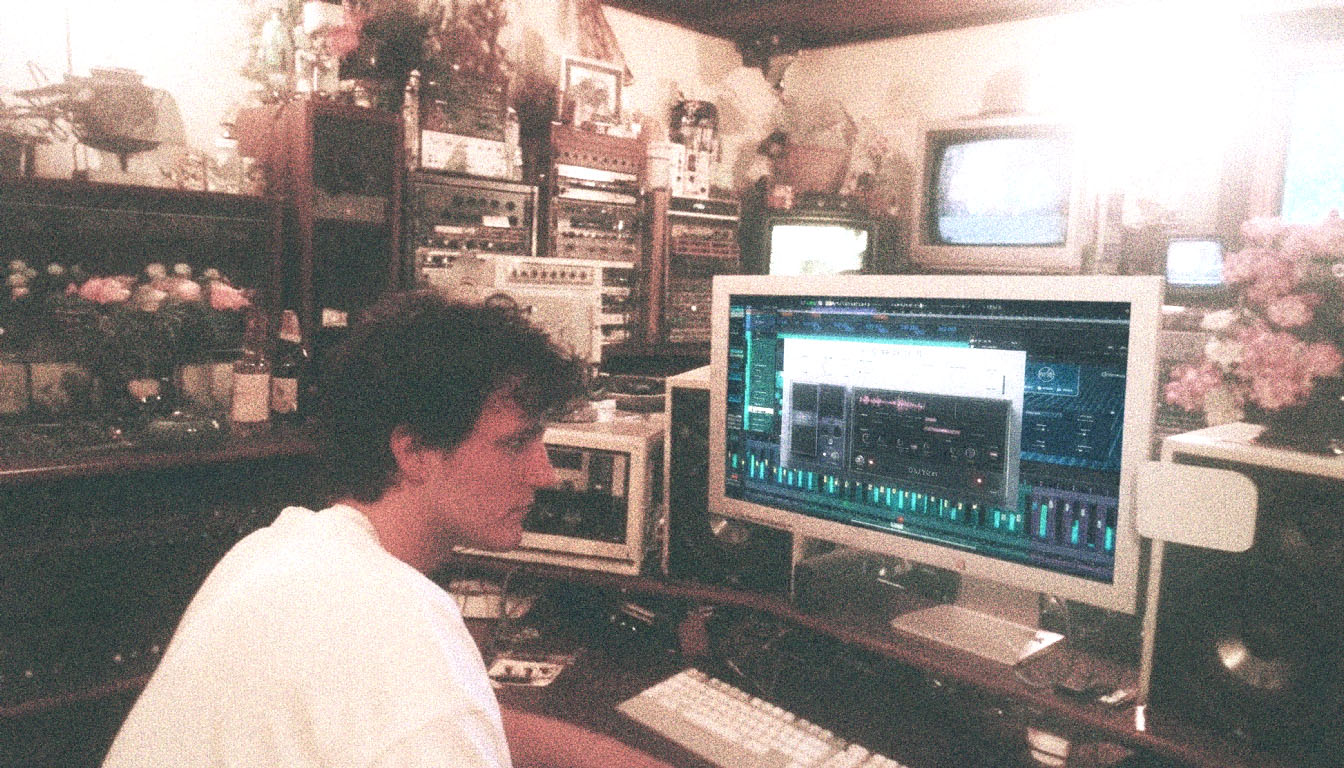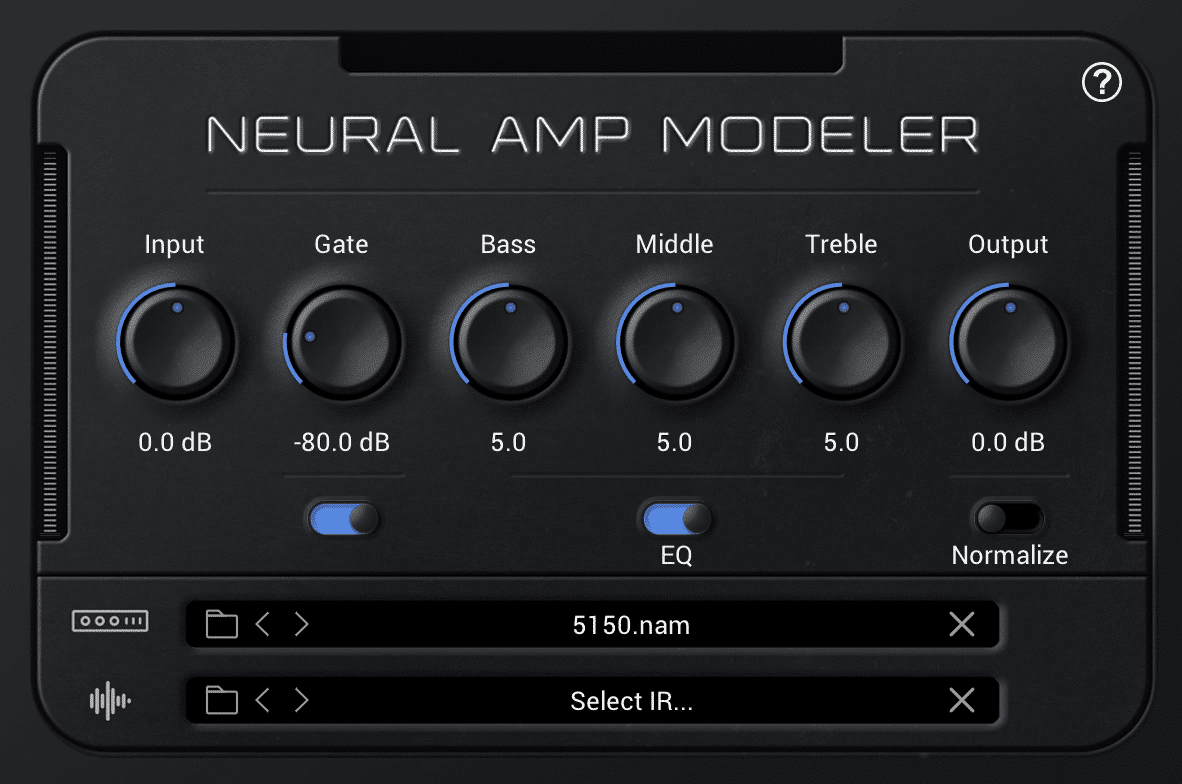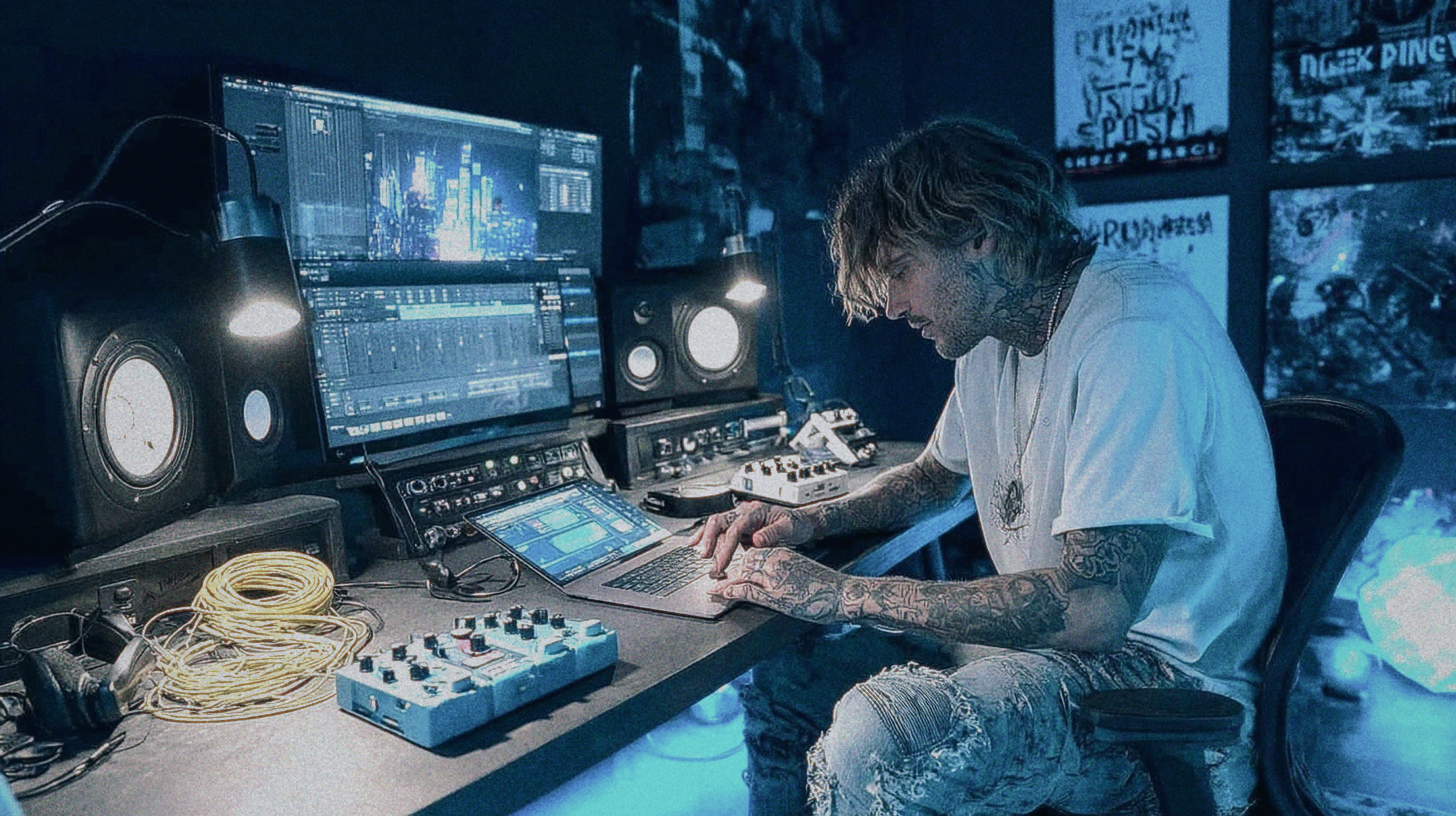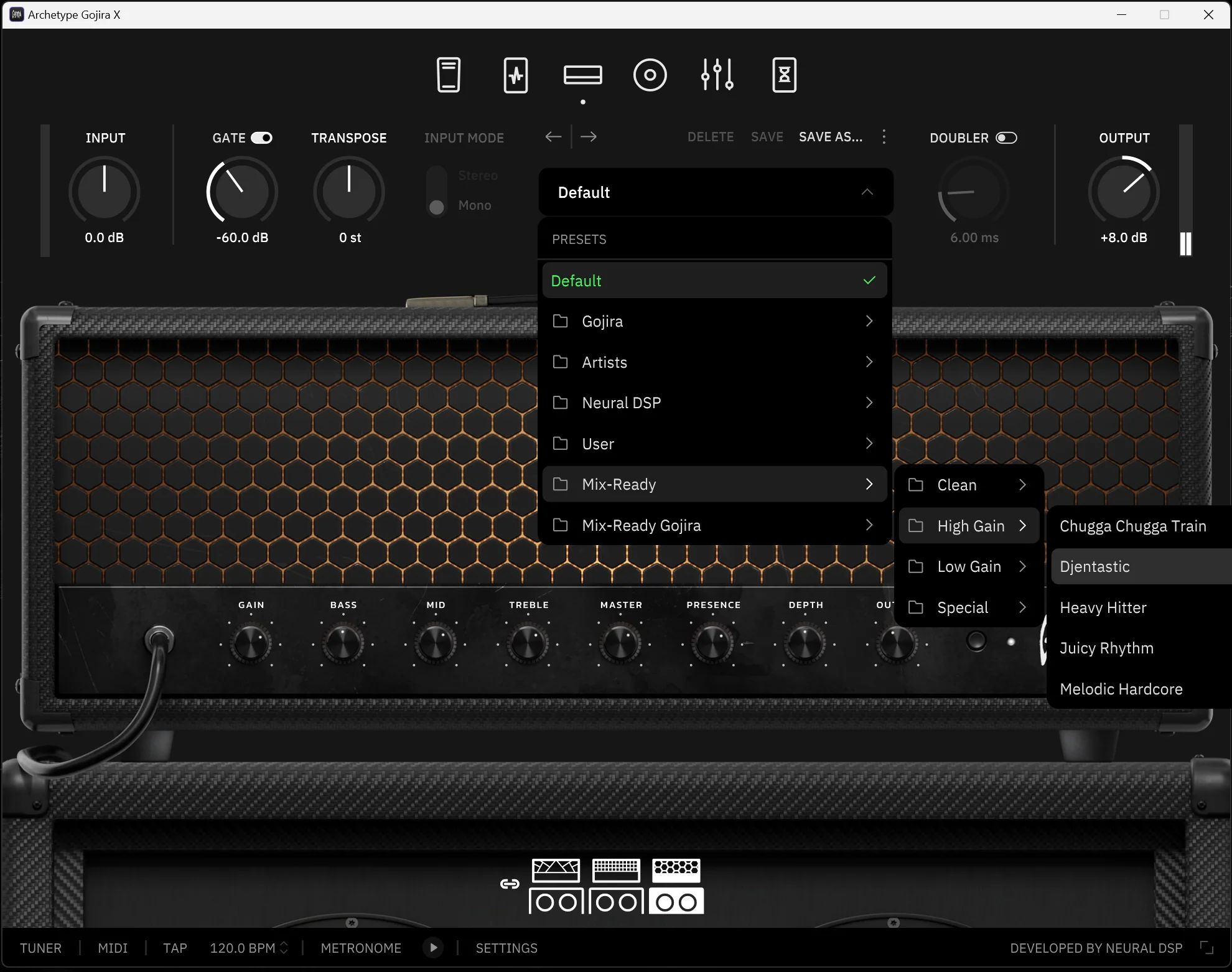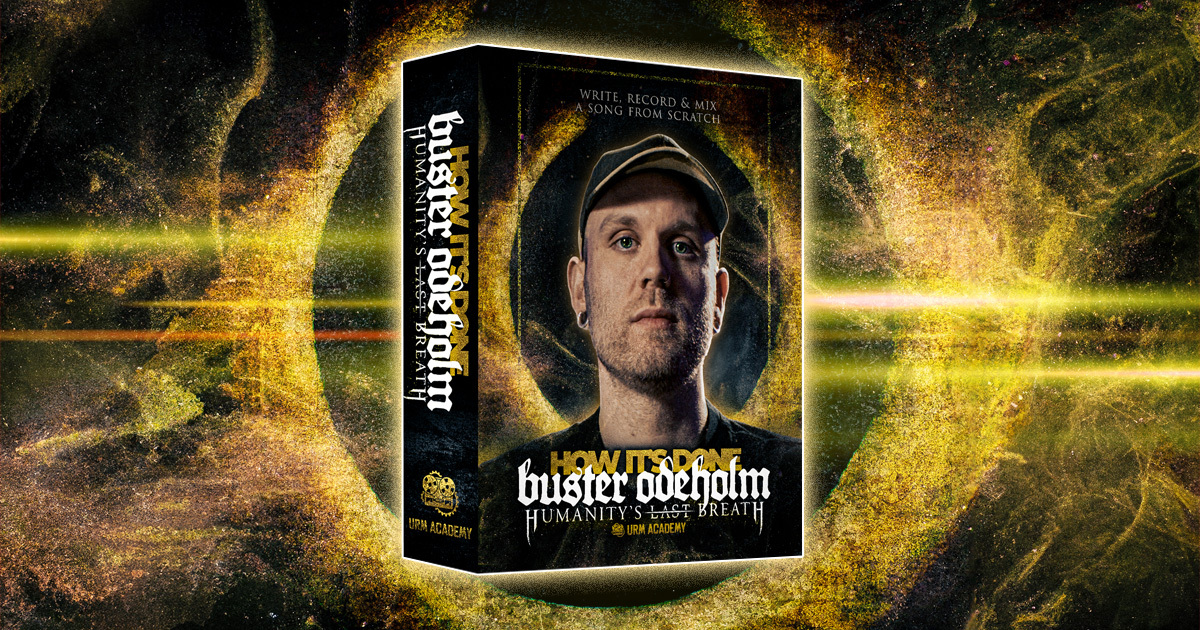
How It’s Done w/ Buster Odeholm: Inside his course
Nail The Mix Staff
We’re in the age of the artist-producer, where the most exciting music is coming from people who write, record, and mix their own stuff. There’s no better example of this than Buster Odeholm.
As the mastermind behind bands like Humanity’s Last Breath, Buster built his career by being both the artist and the producer, letting his songwriting and production skills feed each other. And he did it all without a million-dollar studio, using gear you probably have in your room right now.
This isn’t just another mixing tutorial. This is a look inside his entire creative philosophy. We’re tearing open How It’s Done w/ Buster Odeholm course to show you the four core pillars of his sound, and how he gets it by throwing the rulebook in the trash.
Pillar 1: Permission to Get Weird (and Break Stuff)
You know the rules. We’ve all heard them from forum gatekeepers and know-it-alls: “Triggers are cheating”. “Clipping your DIs is a sin”. “You can’t use that many EQs”.
Buster’s response? Who cares. His sound is built on doing all the “wrong” things on purpose.
- Synths Aren’t Just for Pads, Man: Buster treats audio like a playground. He’ll take a synth, run it through a gnarly guitar amp sim, and literally paste the audio onto his guitar DI track. The result is a robotic, freaky texture you could never physically play. He’s not thinking “guitar” or “synth”; he’s just thinking, “this is a distorted instrument that can be anything”.
- The Chop Shop: That inhumanly tight, choppy guitar sound? It’s not just god-tier playing. It’s a result of extreme editing. He often records riffs one measure at a time, or even note by note, picking the best-sounding little bits and stitching them together in his DAW. It’s not about fixing mistakes; it’s about creating a new, impossibly tight and rhythmically complex one.
- Embrace the Glitch: While most producers desperately try to avoid digital artifacts, Buster welcomes them. He’ll obliterate audio with time-stretching or use plugins like Melodyne and Portal to create wild, granular effects. Those so-called “glitches” become a core part of the sound design.
Pillar 2: Making the Heavy Parts Actually Heavy
Ever write a riff that slaps, but the mix just sounds… loud? Not big? The secret isn’t another compressor. It’s all about the arrangement.
Think about it: if every single instrument is going full-blast all the time, nothing has any impact. Buster’s method for creating truly massive-sounding mixes is by giving them space to breathe.
- Empty Space is Your Friend: His tracks often start with simple, open drum and guitar parts. This creates huge pockets in the mix. Then, all the crazy, dense stuff—the synths, the effects, the layers—get added on top as accents that hit way harder because they have room to shine.
- The “Surprise!” Kick and Bass: To make his low end hit like a sledgehammer, Buster makes the kick and bass play as little as possible. He hates the sound of the bass just mindlessly following the guitar all the time because it kills the dynamics. Instead, when that kick and bass finally drop in on a breakdown, it’s a genuine event that makes the whole section feel 10 times heavier.
- Tune for the Note, Not the Song: To get ultimate low-end clarity, especially with low tunings, he’ll even track a single riff in multiple takes. If there are a few super low chugs on the lowest string, he’ll re-tune his bass specifically for those notes, record them, and then tune back up for the rest. It’s tedious, but the clarity is undeniable.
Pillar 3: Your Gear is Probably Fine
Seriously. Stop lusting over that $5,000 preamp. Buster’s success is living proof that it’s the ear, not the gear, that matters most. Your creativity and skills are what will set you apart.
His biggest investment is a powerful computer, because that’s where the real magic happens. The rest of his recording rig is refreshingly normal.
- The Focusrite Rig: The drums for this course were recorded on Buster’s personal setup: a simple Focusrite Scarlett 18i20 and an OctoPre for a total of 16 channels. He didn’t even use the fancy studio console. He plugged right into his interface, just like he does at his rehearsal spot.
- The Two-Whammy Attack: His iconic pitch-shifting madness comes from two DigiTech Whammy pedals on his board. He uses one to drop his guitar down to crazy low tunings and the other specifically for the high, screaming dive-bomb effects because he thinks its tracking sounds better for that.
- The $1 Compressor Trick: This might be the best takeaway. Buster uses a super thin .60mm Tortex pick. Why? It acts as a natural compressor. When he digs in hard, the pick flexes more; when he plays softer, it flexes less. This evens out his playing dynamics before the signal even hits the interface, giving his amp sims a more consistent and controlled distorted tone.
Pillar 4: Finish Your Own Damn Song
For a sound this unique, the process doesn’t stop at the mix. Buster controls his vision from the very first synth bleep to the final, slammed master.
Think about it. If you sent one of these beautifully chaotic mixes to a traditional mastering engineer, what would they do? They’d “fix” it. They’d clean up the distortion and tame the dynamics, ripping the very soul out of the track.
- Mixing Into Your Master: Buster doesn’t just mix a track and then throw a limiter on at the end. His master bus chain is active the entire time he’s mixing. Every EQ boost, every fader move, is made while hearing how it will sound through the final processing. The mix and the master are one and the same.
- The Magic Chain: His mastering chain is beautifully simple but brutally effective. It’s just a compressor, two instances of FabFilter Saturn for that sweet saturation and crunch (using an old preset called “Magic Mastering”), and a limiter getting pushed hard.
- Happy Accidents Rule: In the course, there’s a perfect moment where he checks his Saturn settings and realizes he accidentally left the “Linear Phase” mode off, which was adding some extra low-end distortion. His reaction? He tries turning it on, and it sounds worse. He kept the “mistake” because he’d been mixing into that specific vibe the whole time. That’s a level of control you only get when you see your track through to the finish line.
What You Get: The Whole Arsenal
This course is a treasure chest for any modern producer. You don’t just watch videos; you get all the raw materials to start experimenting immediately.
Here’s what’s inside:
- Over 13+ hours of deep-dive video content.
- The complete raw multi-tracks for the Humanity’s Last Breath song “Anthracite” so you can tear it apart yourself.
- Buster’s personal production templates for all the major DAWs (Studio One, Cubase, Reaper, Pro Tools, Logic).
- His custom drum samples recorded for the course.
- Killer Bonuses: You also get the entire “Labyrinthian” Nail The Mix session plus a ton of mini-courses on amp sims, drum editing, and more.
- Access to the private members-only Discord to nerd out with other producers.
Stop Following Rules, Start Making Them
If you feel stuck in a creative rut, if you’re tired of making music that sounds like everyone else, and if you’re ready to embrace a process where songwriting, production, and mixing are all one big, messy, beautiful thing, this is your permission slip. The How It’s Done w/ Buster Odeholm is less of a tutorial and more of a new mindset for making music.
Ready to get weird? You can get instant access to the whole thing—multitracks, templates, and all—right here:

